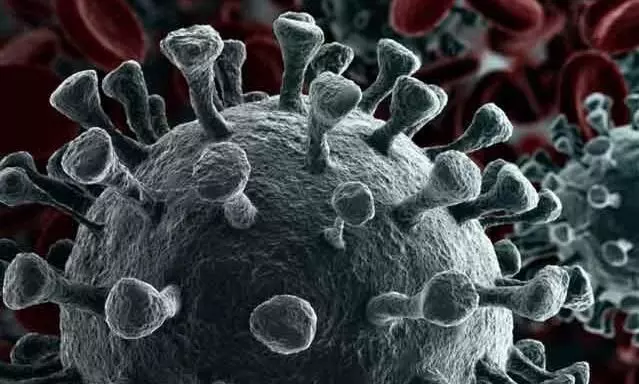
Study reveals prolonged presence of SARS-CoV-2 in lungs
text_fieldsA recent study has unveiled the persistence of the SARS-CoV-2 virus in the lungs of certain individuals for up to 18 months after infection.
While typically becoming undetectable in the upper respiratory tract one to two weeks post-infection, the virus's lingering presence in the lungs might be associated with a failure in the body's innate immune response.
The study was conducted by the Institut Pasteur in collaboration with the Alternative Energies and Atomic Energy Commission (CEA).
Published in the journal Nature Immunology, the study examines lung cells in an animal model, revealing that SARS-CoV-2 can persist in the lungs despite being undetectable in the upper respiratory tract or blood. Researchers found evidence of viral presence in some individuals even after 18 months from the initial infection, suggesting the possibility of the virus establishing 'viral reservoirs' similar to HIV.
Michaela Muller-Trutwin, the Head of the Institut Pasteur's HIV, Inflammation, and Persistence Unit, noted the observed prolonged inflammation in primates infected with SARS-CoV-2. This led the researchers to investigate the virus's presence within the body.
The study highlighted that the Omicron strain exhibited lower levels of persistent virus in the lungs compared to the original strain of SARS-CoV-2. Intriguingly, viruses were detected in alveolar macrophages even when conventional PCR tests showed negative results, indicating the potential for viral replication.
Nicolas Huot, the study's first author and a researcher in the Institut Pasteur's HIV, Inflammation, and Persistence Unit, expressed surprise at finding these viruses in immune cells, even after extended periods. The team managed to culture these viruses and observe their ability to replicate, mirroring findings in HIV studies.
The researchers explored the role of natural killer (NK) cells in controlling these viral reservoirs, revealing varying responses. Some individuals exhibited adaptive NK cells capable of destroying infected cells, while others displayed reduced NK cell activity, possibly contributing to higher virus levels.
The study's insights into the role of innate immunity, particularly NK cells, in managing viral persistence shed light on the mechanisms behind viral reservoirs. Notably, individuals with lower virus levels displayed adaptive NK cell production, whereas those with higher virus levels exhibited decreased NK cell activity, potentially influencing the virus's prolonged presence.























